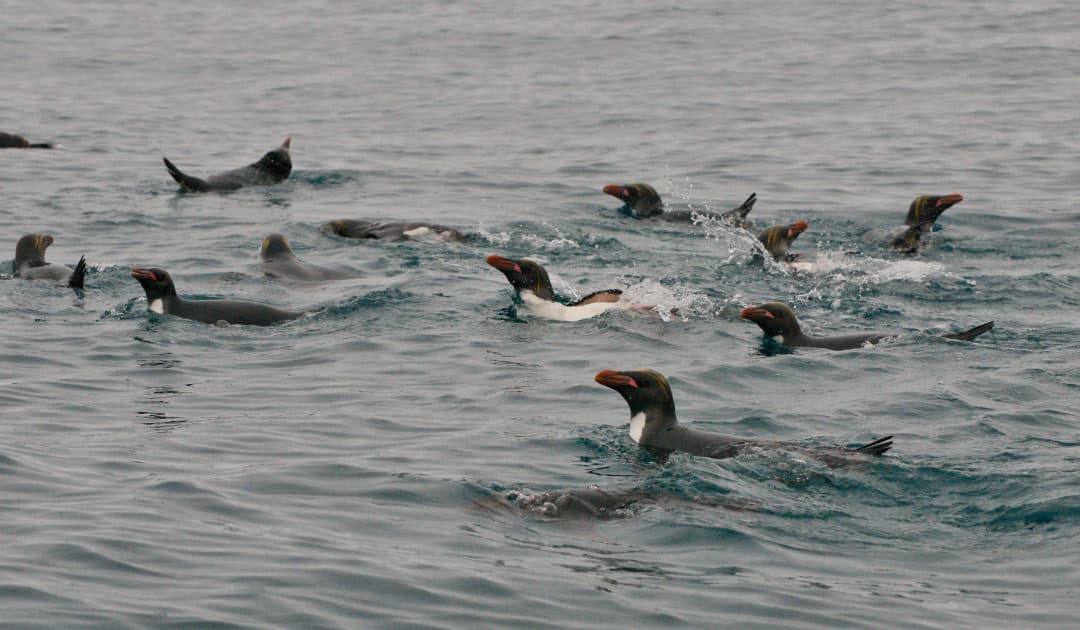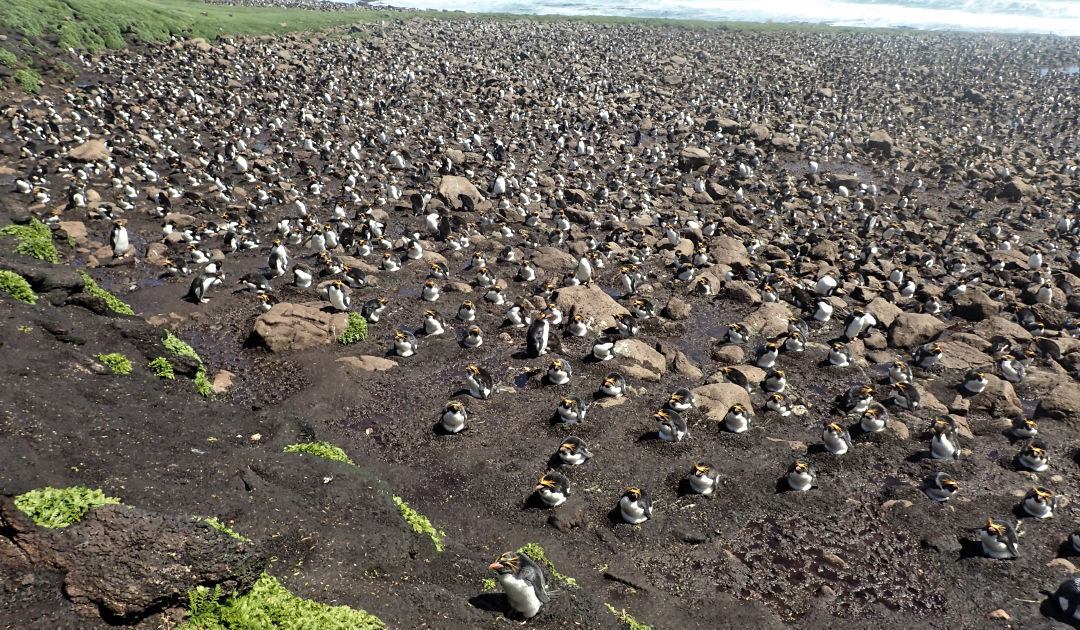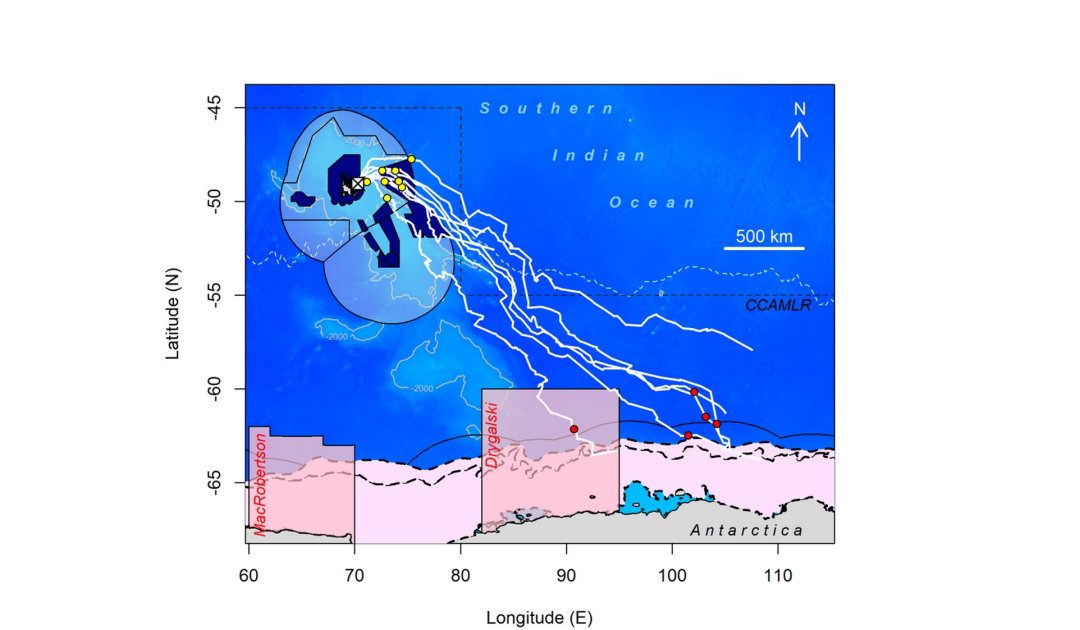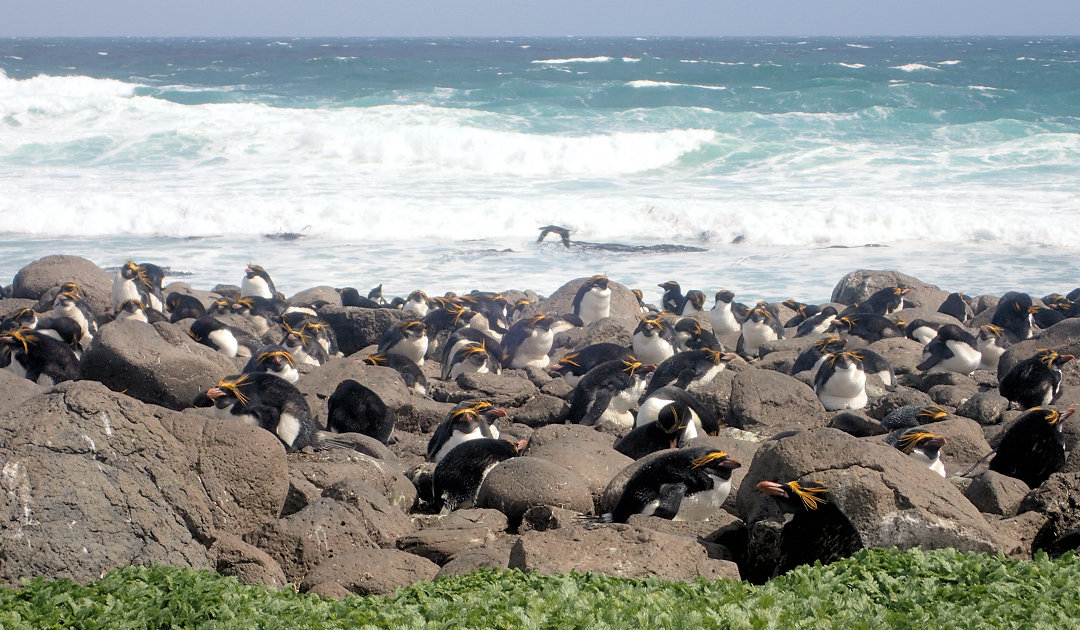
For some penguin species, the huge swarms of krill in the Southern Ocean form the basis of life. Especially for the conspicuous Macaroni penguins that live and breed on the subantarctic islands, the small crustaceans are essential food, no matter what stage of life they are in. A study by two French researchers has now revealed what distances barely fledged macaroni penguins cover to reach the energy-rich food.
It is a long way from the Kerguelen Islands in the Indian Ocean almost to the coast of Antarctica. But young macaroni penguins, known for their striking yellow feathers on their heads, take on this journey in their first year and swim an average of 2,500 kilometers to the summer sea ice margin off the coast. They only need about 2 months to do this and probably migrate further than their adult counterparts. Jean-Baptiste Thiebot and Charles-André Bost obtained this result after evaluating satellite data and have now submitted it to the scientific journal Marine Biology for review.


For their study, the two researchers had fitted ten macaroni chicks with solar-powered transmitters that sent their location via the ARGOS satellite system. Of the ten transmitters, nine provided sufficient data over a period of several months, allowing the two researchers to accurately record the routes. The data showed that the young birds first stay at the edge of the Kerguelen Plateau, an elevation in the Indian Ocean that rises to almost 200 meters, and only then swim from the Antarctic Convergence Zone to the pack ice edge in East Antarctica within about 2 months. They reach this between mid-April and early May. What happens after that, however, is still unknown.
A comparison with observations and records both from ships and from stations in East Antarctica show that the birds, however, probably stay longer near an area known as the “Drygalski area” and that they are not outliers, but the fledglings probably visit the region very purposefully. “Considering the estimated population size of 1.8 million pairs of macaroni penguins in the Kerguelen Islands, hundreds of thousands of fledglings are likely to be distributed seasonally in this area,” the two authors state.

Especially noteworthy is the fact that Macaronis are not actually ice-loving penguins. Adult studies have shown that penguins avoid sea ice as adults. Animals on South Georgia migrate north after breeding and those on the Kerguelen Islands first migrate to the plateau edge before swimming back to the archipelago for molting. In doing so, they probably take the same direction as the young birds that have just fledged, the authors explain. But after that, the latter move south on their own, without guidance from adults. “This element strongly suggests the innate nature of this ice-bound dispersal in young Macaronis,” Thibot and Bost write further.
Especially in the field of thermoregulation, the energy costs of keeping the body warm are likely to be very high for the young birds. However, the large food supply of the marginal sea ice zone probably easily outweighs these costs, as the animals do not have to dive as deep here as in the Kerguelen area, and the ice floes provide ideal platforms between dives, the two researchers argue. In addition, competition with adult animals for food resources is likely to be eliminated, which should be a decisive advantage for further growth.
Although macaroni penguins are the most numerous penguin species and represent a huge mass of around 12 million individuals, the two researchers warn of a possible decline. Because krill is not only under pressure from climate change. The small crustaceans are also to be increasingly harvested and processed, including in the East Antarctic area. The Drygalski region was also supposed to be one of the marine protected areas, but was rejected at the last CCAMLR meeting a few days ago. The results of the study show that juvenile Macaronis only partially stay in these regions, putting them at risk of becoming victims of krill fishing. “Juvenile birds are also at risk from unregulated human activities that are conducted or may occur in areas outside of national jurisdictions and outside the scope of CCAMLR,” the authors write.
Dr Michael Wenger, PolarJournal
Link to study: Thibot & Bost (2023) Mar Biol (under review) Exploitation of distant Antarctic habitats by juvenile macaroni penguins: conservation implications.
More about this topic





